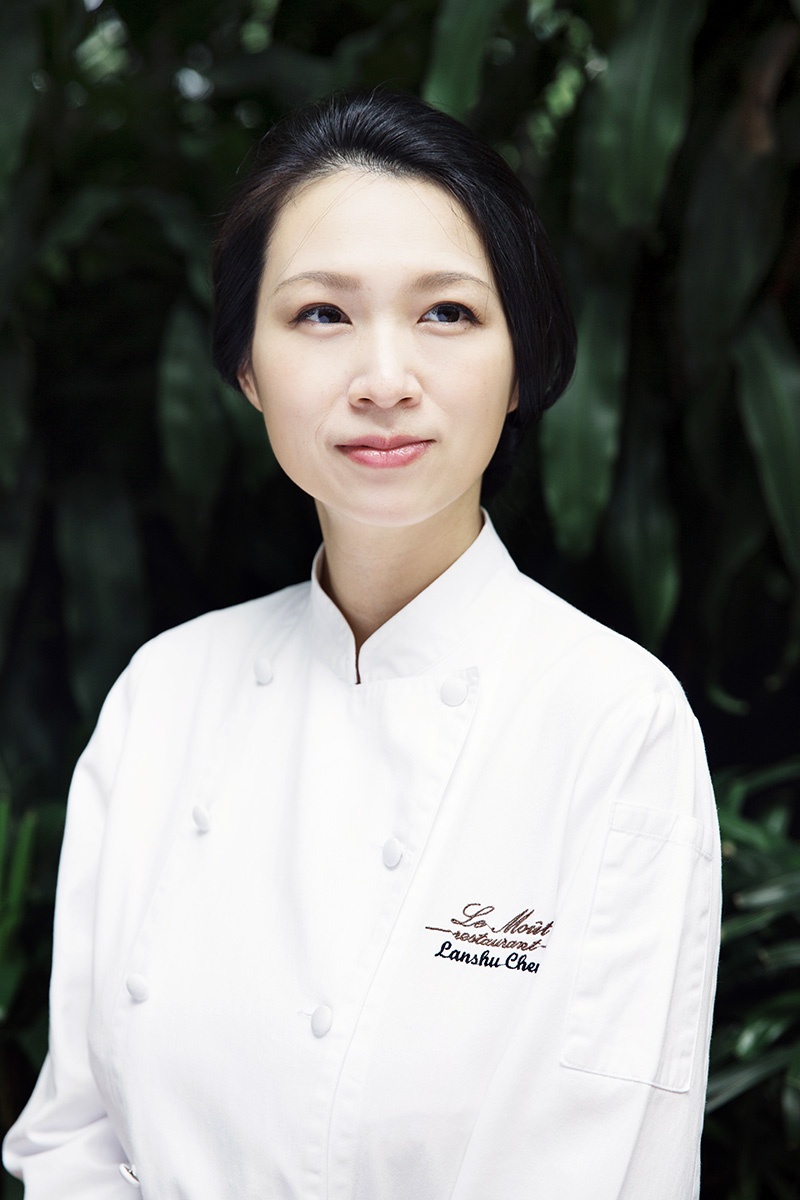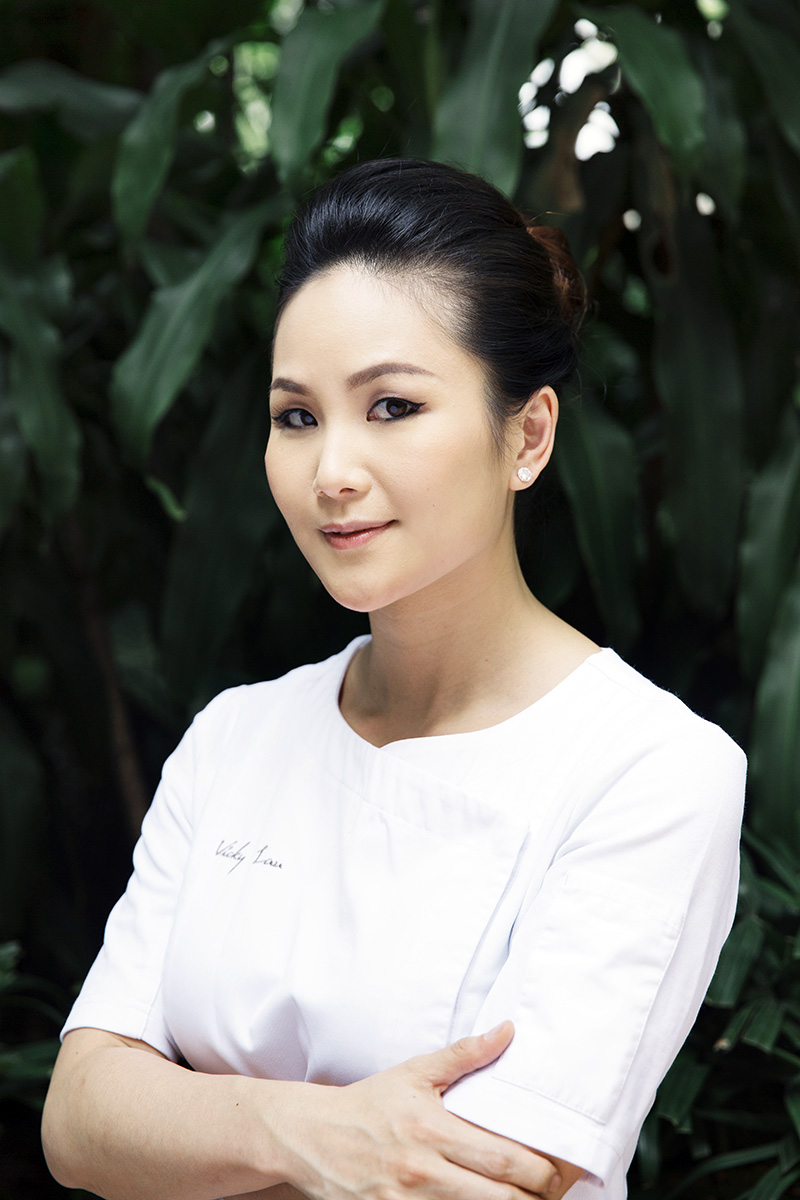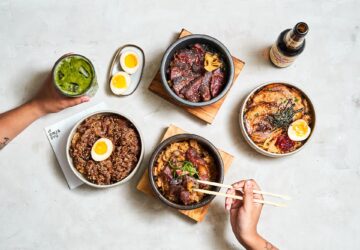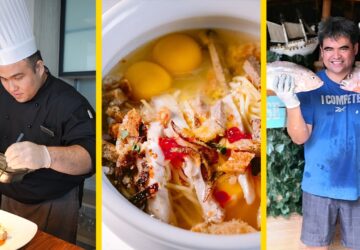Their studies abroad could very well allow them to be anything they wanted to be and yet they chose a frantic, high-stress life in the kitchen. They all came from comfortable backgrounds and yet they chose a job that couldn’t be any more uncomfortable. Still, they emerged at the top of their game and are ready for more challenges. Meet Asia’s best female chefs who lent their talents and star power for a good cause.
Bo Songvisava, Asia’s Female Chef 2013

Unlike the three who came after her, Songvisava knew from a young age that she wanted to be a chef. “Since high school, I already knew that’s what I wanted to do,” she says. Her well-meaning mother, perhaps not fully convinced that it was not a fleeting dream of a fickle-minded teenager, urged the young Songvisava to get a bachelor’s degree first. After studying hotel and restaurant management in Australia, she returned to Thailand thinking she could finally go to culinary school but her mother had other plans. “My mom said, ‘You need to take your master’s degree first,’” Songvisava exclaims with a laugh. So she accomplished her master’s degree in gastronomy, which was probably enough proof for her mom that her heart was indeed set on becoming a chef.
Songvisava gives full credit to Australian chef Amanda Gale for giving her that elusive break she needed. “Nobody wanted to hire me when I returned [from Australia], but luckily Amanda took me in. I’m quite sure I was hired simply because I spoke English,” the chef says, smiling.
Apart from championing slow food in her part of the world, Songvisava also continuously educates herself about regional Thai food through her travels all over the country.
It was also Gale who sent her to London to work at a friend’s Thai restaurant, and while the pay was meager, she took home something more precious than money: She met husband Dylan Jones, the other half of Bo.lan (a combination of their names and a Thai word that translates to “ancient”). Songvisava describes their cooking as “essentially Thai,” allowing them to interpret authentic flavors “their way.” Being away in London allowed her to “fall in love with Thai food” all over again. Her exposure to Bangkok’s beautiful temples of gastronomy with diluted flavors made her want to fill a void in the market by offering refined interpretations of Thai cuisine without having to pull back on authenticity. Apart from championing slow food in her part of the world, Songvisava also continuously educates herself about regional Thai food through her travels all over the country.
Her dedication to her vision paid off, garnering not only a place in Asia’s 50 Best Restaurants list for Bo.lan but also top female chef accolades for Songvisava. This is a far cry from the overachieving scholar chefs who refuse to hire for lack of experience; so different, too, from the young girl who needed to beg her mother to send her to culinary school. (She actually never did go; she went straight to an internship after taking her master’s degree.) Now, the world finally believes what Songvisava knew all along—that her place is truly in the kitchen.
Lanshu Chen, Asia’s Best Female Chef 2014

Serene and delicate, Lanshu Chen looks like a porcelain doll that should be lovingly admired within a gilded glass case, away from the searing heat of the industrial stoves she subjects herself to. Her love for cooking started at 10 when she would bustle around the kitchen preparing traditional Taiwanese dishes and assisting with simple things such as frying an egg or fermenting radish. But it was enough to make an impact on the young Chen.
She eventually went to university to major in English and French, but when she reached her sophomore year she began to question her choices. “I asked myself if I should continue,” Chen says. Fortuitously, she followed her gut feel and left for Paris to study pastry and continued to take a full culinary course. Backed with her degrees, she was able to bag jobs in the illustrious Relais d’ Auteuil in Paris and French Laundry in Napa Valley.
“My food is my own interpretation of flavors; it’s traditional French yet it allows me to incorporate my own flavors and taste. With the blend of Western and Chinese, it has a rather broad flavor profile. So, yes, it’s ‘French’ but more complex,” says Lanshu Chen.
When she returned to Taiwan to open her own restaurant, she had an arsenal of work-related experience and the confidence to apply it to her creative vision. When asked to describe her food, Chen can’t help but apply her training in the romantic languages and wax poetic: “My food is my own interpretation of flavors; it’s traditional French yet it allows me to incorporate my own flavors and taste. With the blend of Western and Chinese, it has a rather broad flavor profile. So, yes, it’s ‘French’ but more complex.” Chen smiles and calls it simply “Lanshu’s cooking,” a testament to her own distinct style.
In an industry where the weak and naive drop like flies, Le Moût’s eight-year run (and still going strong) is proof that looks are truly deceiving. Chen is every bit as cunning and calculated as the best of them, and it would not be a surprise if her temple to gastronomy outlives them all.
Vicky Lau, Asia’s Best Female Chef 2015

A decade ago, nobody would have thought that Hong Kong native Vicky Lau would be the chef and owner of a Michelin-recommended restaurant. Back then, she had a completely different career. You would have a greater chance of finding her power-lunching in the dining room rather than plating dishes in the kitchen. But, as a graphic communications graduate from New York University, she found herself comfortably settling into a cushy job in advertising in one of the busiest cities in the world.
However, when she came home to Hong Kong, it was more difficult to find an agency to work for that coincided with her values and ideals. “I started to question the meaning of what I was doing,” she imparts. “What was the whole point?” She knew she needed a creative outlet that touched people’s lives in a more significant and personal way.
At the prodding of her peers, she opened Tate Dining and Bar (now on its new location along Hollywood Road, Sheung Wan) where she gets to serve food using French techniques with Asian nuances.
While she learned to cook for herself at university watching food shows, she sharpened her skills at Bangkok’s Le Cordon Bleu before finding work at Michelin-starred Cépage in Hong Kong. At the prodding of her peers, she opened Tate Dining and Bar (now on its new location along Hollywood Road, Sheung Wan) where she gets to serve food using French techniques with Asian nuances.
As expected from a woman with her background in visual arts, her “edible stories” are just as much a feast for the eyes as they are a balancing act of flavors and textures. Lau explains how, at Tate Dining, “everything on the table has a reason,” everything a calculated move intended to enhance her guests’ dining experience. From a lady who chose to find meaning and substance over comfort and security, we expected nothing less.
Margarita Forés, Asia’s Best Female Chef 2016

As she sat in her makeup chair getting dolled up for a photo shoot, we caught a glimpse of the Margarita Forés that “could have been” had she not taken the path she chose. She could have fit the glamor-puss persona to a T—she is the daughter of iconic socialite Baby Araneta Forés, after all. It actually seemed like she was being groomed to take the throne when, back in the ’80s, her mother got her a much-coveted spot working in the licensing director’s office of emblematic Italian designer Valentino. “I was a gofer!” Forés candidly exclaims when asked what exactly she did there, but while the title might seem insignificant, it allowed her access into one of the most successful enterprises in fashion. “Working for Mr. Valentino taught me how to build a brand,” she humbly shares. “I believe it’s one of the most important lessons I learned, something that I was able to apply to my own business.”
When she went back to Manila, Margarita Forés begged her mother to send her to Italy to study the language and the cuisine. It was in Italy where she decided that she wanted a career in cooking, so she learned from the best: the Northern Italian nonnas who took her in and passed on their heirloom recipes to the most eager of students.
Most vital, it seems, is that it exposed her to glorious Northern Italian food. The Italian company showed her the richness of their culture but the food, most of all, was what captivated Forés. She found herself cooking for her family and friends (“I was a witness to that,” Forés’ favorite makeup artist and childhood friend Tinette cheerfully confirms) in her Manhattan apartment and at the vacation home of her grandfather in Upstate New York, and soon enough she became consumed by her love for Italian food. When she returned to Manila, Forés begged her mother to send her to Italy to study the language and the cuisine. It was in Italy where she decided that she wanted a career in cooking, so she learned from the best: the Northern Italian nonnas who took her in and passed on their heirloom recipes to the most eager of students.
Thirty years later, the student is herself an icon, cooking not just beloved and authentic Italian dishes but confidently instigating a reinvigorated love for Filipino cuisine through her championing of sustainably grown local ingredients. Forés credits the Italians for teaching her this “respect for ingredients” and “how they seriously care for their produce.” When asked to describe her food, she stands firmly by her beliefs—that while it might seem like traditional dishes interpreted in a modern way, “it’s neither Italian nor Filipino. It’s about the respect for ingredients.”
Originally published in F&B Report Vol. 14 No. 2





